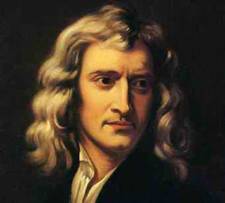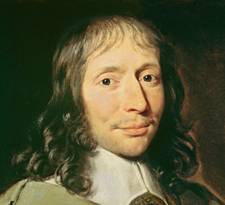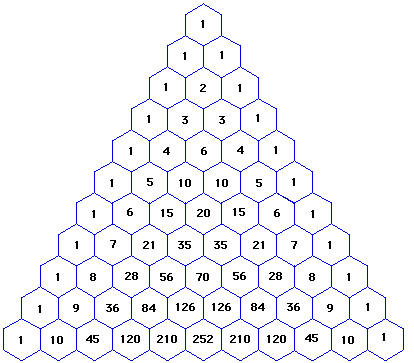A Biography of Albert Einstein

Date of Birth: 3/14/1879 Date of Death: 4/18/1955
Birthplace: Ulm, Württemberg, Germany
Albert Einstein is perhaps the most recognizable name of all scientists and mathematicians. He is widely considered to be one of the most intelligent people in the worlds history, and the name "Einstein" is even routinely used in place of the word "genius."
Einstein was born into a Jewish family in Germany, but he spent time in Italy, Switzerland, and eventually the United States. When he passed away, he was residing in Princeton, New Jersey.
Einstein's contributions to math and science are immense, physics in particular. Arguably, his best known achievement is his theory of relativity, and the famous equation E = mc2.
A Biography of Sir Isaac Newton

Date of Birth: 1/4/1643 Date of Death: 3/31/1727
Birthplace: Woolsthorpe-by-Colsterworth Lincolnshire, England
Sir Isaac Newton is considered by some to be the most influential man in the history of science, more so than even Albert Einstein. He was born in England, spent much of his time and eventually died there. Newton, along with Gottfried Leibniz, is credited with the development of Calculus. There remains much controversy over the true discoverer of calculus. Newton accused Leibniz of plagiarism, but no proof was ever found. Today, most historians accept that the two men discovered calculus independently.
In addition to his vast contributions to the fields of mathematics, Newton is also credited with the development of many topics in, among other things, philosophy, astronomy, and physics. You may have heard of Newton's Laws of Motion, in particular his first and third laws (paraphrased below).
First Law: an object in motion stays in motion, and an object at rest stays at rest unless and external forces acts upon it.
Third Law: for every action there is an equal and opposite reaction.
A Biography of Blaise Pascal

Date of Birth: 6/19/1623 Date of Death: 8/19/1662
Birthplace: Clermont-Ferrand, France
Blaise Pascal was a French philosopher, physicist, and of course mathematician. Pascal demonstrated his abilities at a very early age, under the guidance of his father, but lived a short life (he died at age 39). Controversy seemed to follow Pascal throughout his life. For instance, Pascal offered a prize for a mathematical contest he proposed. However, Pascal entered under an alias and crowned himself the winner.
Pascal is famous for his contributions to probability. In fact, he is considered to have been at the forefront of field. He took a strong interest in gambling, and is credited with the development of expected value, a fundamental theory used by professional poker players today. Without Pascal, perhaps Texas hold 'em never would have gained the popularity it has today. In addition to professional gamblers, many economists gained valuable information from Pascal, particularly acturarial scientists.
If you have heard of Pascal it is probably because of Pascal's Triangle. Pascal's triangle has many interesting mathematical connections, but Pascal discovered its connection to the binomial coefficients. Each number is generated by adding the two numbers above it... Look below.

Notice that each row has one more term than the last, and that there are 1's diagonally down each side. As stated before, each number is generated by adding the two numbers above it.
 |
A Biography of Pythagoras

Date of Birth: 580 - 572 BC Date of Death: 500 - 490 BC
Birthplace: Clermont-Ferrand, France
Pythagoras of Samos is said to have been born in the Greek island of Samos. That information, along with everything else about him unfortunately cannot be verified. There is no written documentation from the time that he lived.
He is considered by many to be the "father of numbers" because of his belief that everything, even the "gods and demons", could be explained through numbers. However, he was considered to be a much more influential philosophy. He even led a religious movement in which his followers were called Pythagoreans.
You might recognize the word Pythagorean from the Pythagorean Theorem. One of the most well known geometric formulas, a2 + b2 = c2 , bears his name. The theorem relates the sides of a right triangle.
A Biography of Leonhard Euler

Date of Birth: 4/15/1707 Date of Death: 9/18/1783
Birthplace: Basel, Switzerland
Leonhard Euler was born to a pastor in the city of Basel, but spent most of his younger days in the town of Riehen. Euler's interest in mathematics was sparked at an early age when he began spending much of his time with a family friend Johann Bernoulli, who was widely considered a brilliant mathematician.
Euler's name surfaces in regard to many mathematical fields ranging from algebra all the way up through calculus. Euler was extremely influential in developing much of the vocabulary and notation that is now routinely used in the classroom. For example, Euler was the first to use function notation.
Function notation: f(x) = x + 3 was used instead of y = x + 3.
He was also considered to be the first to use the Greek letter pi to represent the number 3.141592... like it is used today.
A Biography of Fibonacci

Date of Birth: Around 1170 Date of Death: Around 1240
Birthplace: Pisa, Italy
Fibonacci has become such a famous mathematician that he is routinely referred to only by that one name, much in the way Madonna is today. He was born as Leonardo of Pisa, and his mathematical brilliance would soon be discovered.
Today, many students probably recognize the name from the famous sequence now know as the Fibonacci numbers - a number sequence that is generated by adding the previous two terms to create the current term.
Sequence: 1, 1, 2, 3, 5, 8, 13, 21, 34, 55, 89, 144, 233, 377, 610, ...
"Leonardo" is not credited with discovering this sequence, but it was named after him because he shared it with the Western world in his famous book on mathematics the Liber Abaci.
The ratio of the successive, especially high terms, approximates the golden ration. The golden ratio is approximately 1:1.618. The golden ratio has countless connections to the natural world, including the human body.



 Register ON-LINE
Register ON-LINE




Copyright © Since 1999 NallPro® All rights reserved.
|







![]()



![]()

![]()

![]()



 Register ON-LINE
Register ON-LINE



